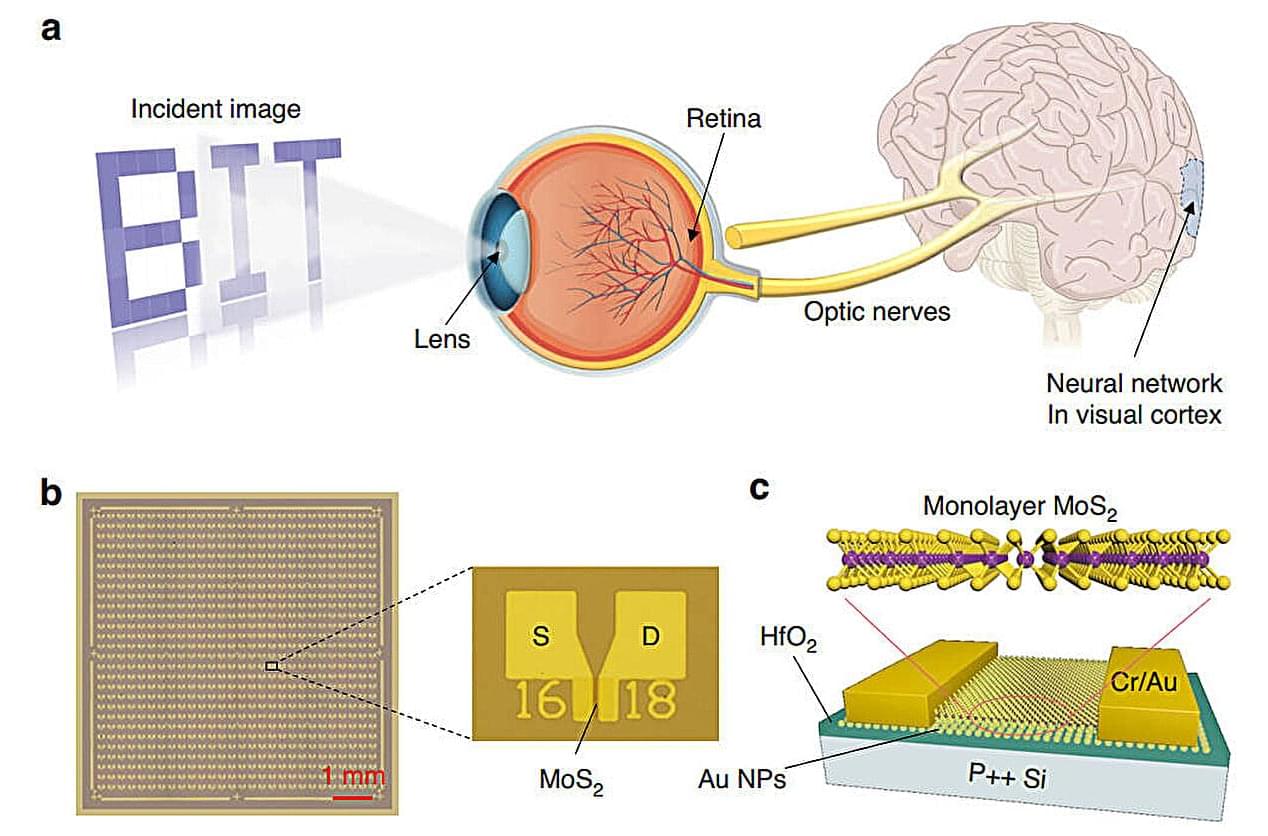In a development for artificial intelligence, researchers have unveiled a synaptic device array that shows promise for enhancing artificial visual systems. This innovative array, measuring a compact 0.7 × 0.7 cm2, integrates the capabilities of sensing, memory, and processing to mimic the intricate functions of the human visual system.
Utilizing wafer-scale monolayer molybdenum disulfide (MoS2) and gold nanoparticles for enhanced electron capture, the array exhibits remarkable coordination between optical and electrical components. It is capable of both writing and erasing images and has achieved a 96.5% accuracy in digit recognition, marking a significant leap forward in the development of large-scale neuromorphic systems.
The human visual system processes complex visual data efficiently through an interconnected network that allows for parallel processing. However, current artificial vision systems face numerous challenges, including circuit complexity, high power consumption, and difficulties in miniaturization.
